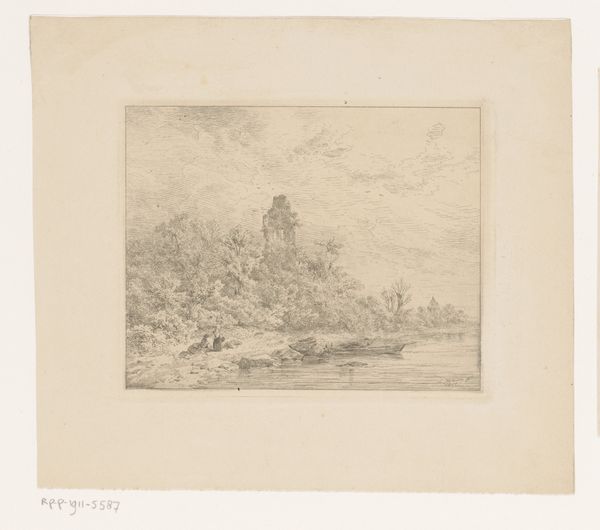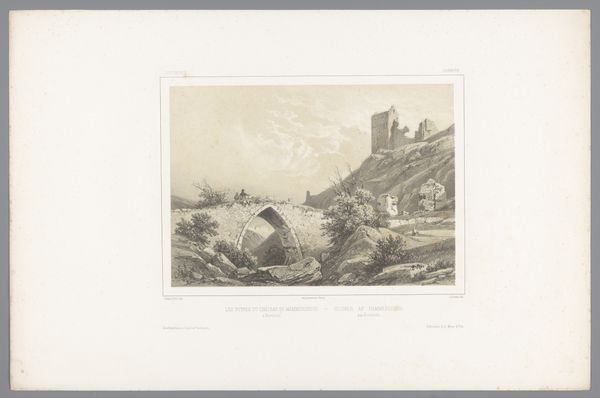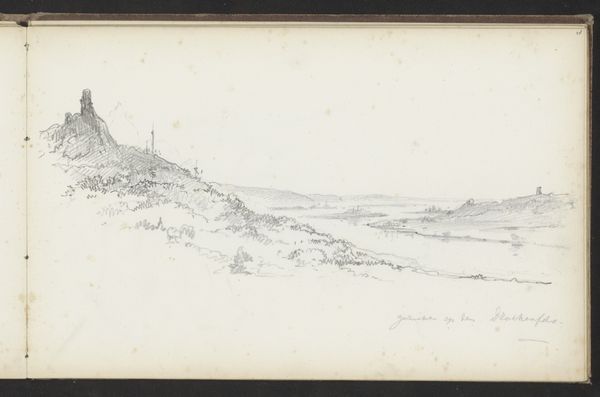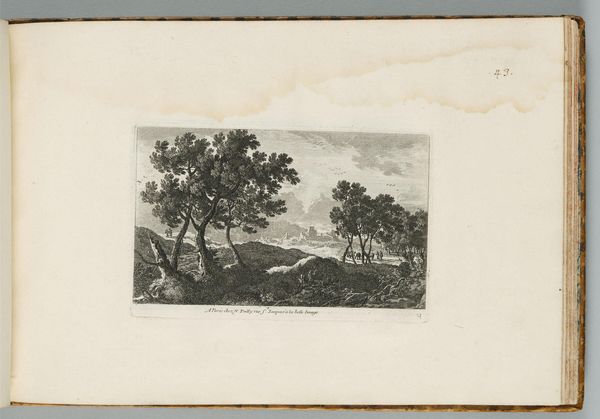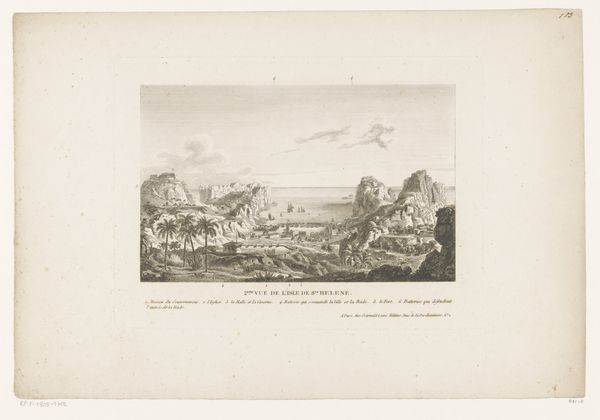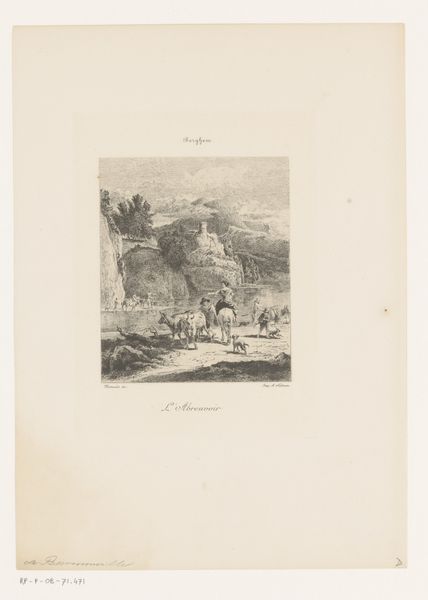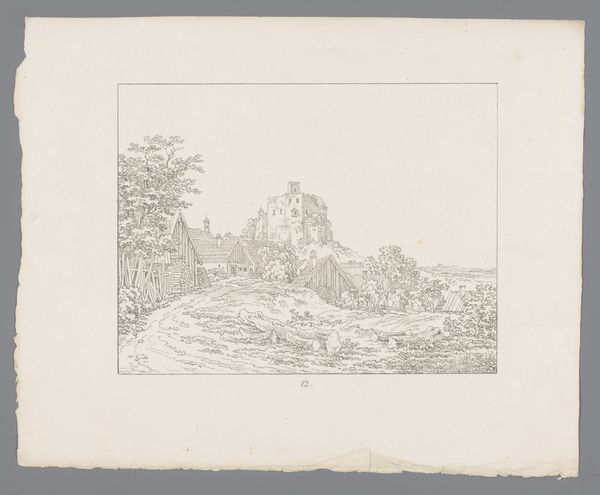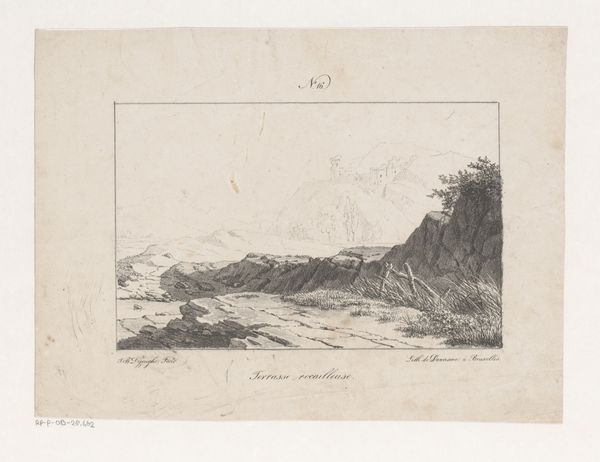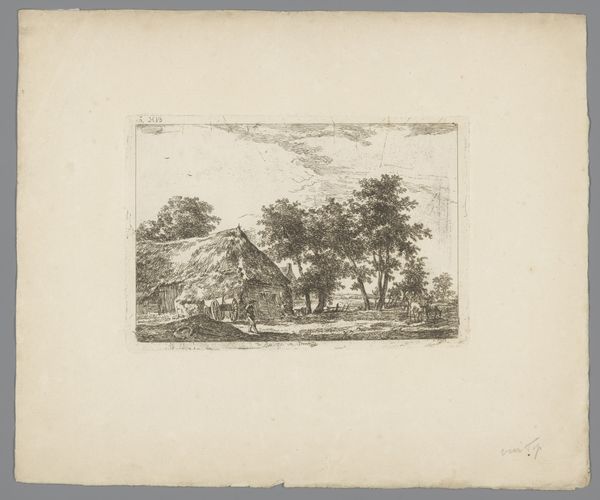
drawing, paper, engraving
#
drawing
#
landscape
#
paper
#
romanticism
#
engraving
#
realism
Dimensions: height 138 mm, width 192 mm
Copyright: Rijks Museum: Open Domain
Editor: This is "Kneeling Woman by a Well" by Jacques Marchand, an engraving on paper, created around 1800-1825. The detail in the etching really highlights the woman's posture and the landscape, and yet it feels almost… documentary. What can you tell me about it? Curator: Notice first the labor captured. The "kneeling woman" isn't idyllic; she's positioned at the center of her labor, which is the core subject of the engraving. The well and what she gathers are crucial material elements. How does the paper itself influence our understanding? Editor: I guess because it’s an engraving, a print, it allows for multiples. Is that suggesting something about accessibility, maybe circulating ideas about… rural life? Curator: Exactly! Think about the context: industrializing Europe. What's being consumed here, literally? Water, of course. But figuratively, we're consuming an image of labor. The fence and rough shelter speak to the means of production, to a lifestyle removed from urban centers, while that life becomes a commodity, available for purchase as a print. Is this romanticising the landscape, or realistically representing the labor of rural populations? Editor: Maybe both? I hadn't considered how the material – the print, its reproducibility – connects to the image's content. Thanks for pointing that out. Curator: Consider how the value we place on singular artworks overlooks the socio-economic relationships they often embody. Material processes open new lines of inquiry, revealing power dynamics.
Comments
No comments
Be the first to comment and join the conversation on the ultimate creative platform.


